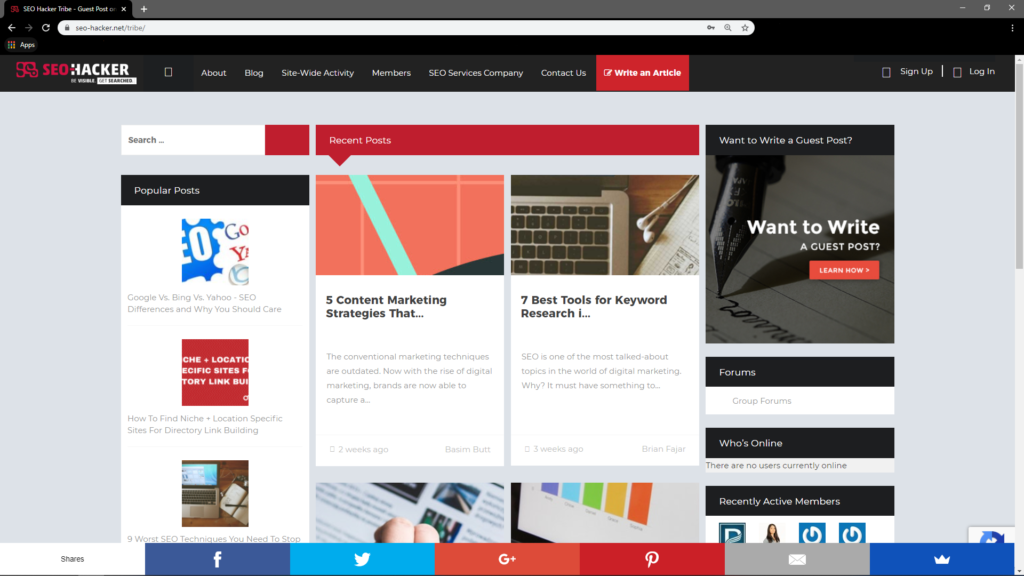4 Factors to Consider for Subfolder and Subdomain SEO
Making your website rank is hard work. This is especially true if you practice ethical strategies like I do. Being an SEO strategist requires you to be sharp and quick on your feet in empowering people to achieve maximum growth through online visibility. With that, subfolder and subdomain SEO is one of the things that you should look into.
I said it before and I’ll say it again, a subfolder is better if you want to increase rankings. Be that as it may, if you are planning to go with a subdomain then you should also look into these factors to consider before doing so. Check it out below.
Defining subdomains
Subdomains are treated as entirely different sites from your root domain. For example, https://blog.hubspot.com/ is a subdomain of https://www.hubspot.com/. Subdomains can have a different structure from your domain and it can be hosted by a different provider altogether. The pages in that subdomain can serve as an omnibus for your content if you would want it isolated from your main site.
There are businesses that use subdomains for a variety of purposes, one of which is to cater to a plethora of foreign language versions. It goes without saying that with the change of language, comes the change in content which is what makes it distinct as a link structure. Subdomains work the same way that any link does, but it is a resourceful way to allocate your content and other resources across different servers.
Why should you get a subdomain?
As I’ve previously mentioned, a subdomain can prove to be useful if you offer your site content in different languages. In addition to this, subdomains can also be beneficial to blogging because this can keep your site structure organized so users will know where they should go to read about news about you.
It is also noteworthy that subdomains play a role in mobile-first indexing. There are subdomains with this type of format: m.sitename.com, which is useful if you want to take advantage of the mobile responsive code. Get a subdomain if you want to save up on space to host downloadable resources. All in all, subdomains serve a different purpose for everybody but it is still useful nonetheless.
Defining subfolders
Given that subdomains can be a great addition to your online visibility and brand reputation, I still stand by subfolders if you are planning to rank high in the SERPs. A subfolder connected to your Second-Level Domain (SLD) will be your edge in beating out the competition for a particular keyword. Subfolders look like this: https://seo-hacker.com/tribe. You can customize the functionalities in a subfolder, all while retaining it under the main domain name. It exists as a fully functional part of the main site that is a part of the overall site structure unlike a subdomain. Setting up a site on a subfolder under a completely different design and content is possible but you would have to pull up a few tricks from your sleeve to achieve it wonderfully.
Why should you get subfolders?
If you want the pages on your subsite to be indexed together with your main site, the subfolder is perfect for you. However different your design can be in a subfolder, search engine robots would still view it as the same part of that site. Putting a new site on a subfolder will give you dedicated landing pages that can help you update content per purpose. With that said, subfolders are suitable for those who do not want to manage subdomain apart from a main site because creating a subfolder in the site is easier to monitor from the same content management system.
Factors to consider in optimizing subdomains and subfolders
Now that we have discussed how subdomains and subfolders can be beneficial for you, take a look at the things you need in order to start creating SEO strategies for these subsites. For this section, we are going to determine which is best for the optimization technique that you are going to create. Judging by the winner for each category, start planning your decision in choosing between a subfolder and a subdomain. Take the winners with a grain of salt because this is my personal evaluation of each category.
Keyword and Intent Research
It is important that you plan ahead so you would not risk failing when optimizing for subdomains and subfolders. Determine what the purpose of these subsites are. Is it going to be an informational site or an e-commerce site?
With this, you should maximize keywords that will bring the right audience to the site and at the very least, maintain the same enthusiasm that your return visitors have for your main site. If you are going to choose a subsite, you should make sure that you can also target keywords that you are not targeting in your main site. This would be a chance for you to get out of your comfort zone and start experimenting with keyword choices that would not interfere with the keyword set that you are actively ranking for.
Winner: Subfolder. It would be the best choice if you would want to focus on other keywords aside from your initially chosen terms. If you did this with a subdomain, you may risk interfering with the main site’s content. Although it would be nice to compete with yourself in the SERPs, it would be a bummer if your main site loses to your subdomain.
Improve Backlink profile
Link authority is one of the main ranking factors that you should always optimize for. If you are planning to create a subsite to improve your backlink profile, make sure that you account for the quality and quantity of links pointing to it. In addition to that, you should also think about the existing links to your main site. Would your subsite add to it in order to improve the backlink profile? As your site earns backlinks and notable mentions from webmasters around the globe, it would gain traction in establishing itself as an authority for a particular niche. If you would like to maintain or improve this authority, you should go where you would be given the most advantage.
Winner: Subfolder. The backlinks you gain for a subdomain will not be carried over to the backlink profile of your site as a whole. Since it is treated as a separate entity from your main site, it is also independent of the links attributed to it. If you want to retain authority on your site, creating a subfolder with the backlinks attached to it would be the most suitable choice.
Location Targeting
Operating an international site would require you to cater to different the audience’s different countries. Having a subsite that can host different languages will prove to be an advantage in the long run. This would invite a surge in traffic because this would mean that you are readily available to users across the globe. With that, you would need a subsite that can help you achieve this purpose.
Winner: Subdomain. With the flexibility that subdomains can give for international considerations, it would be easier for your brand to adopt a strategy that can cater to foreign clients with a subdomain. Moreover, subdomains will be useful if you would want to have an audience segmentation, further helping you with your market research.
Technical Issues and Management
Choosing a subsite format would require you to put specific technical precautions in place. With this, you will need to manage the technical aspect accordingly. This is essential so that security risks would be reduced and the site would perform well in search engine rankings. Of course, you should go to the subsite most convenient for you, which is the one that will present you with less counterproductive measures.
Winner: Subfolder. With subdomains, you would need different robot.txt files for your subdomain and XML sitemaps as well. This also goes without saying that you need the proper canonical and hreflang attributes. You should also consider performance tracking together with technical management since you would have to put in a lot of work.
Key Takeaway
Pitting these two against each other puts subfolders as a clear winner. With these factors in consideration, it would not prove to be difficult to optimize subfolders for SEO. Know that each subsite serves a purpose, choose whichever would be most suitable for you. But in the battle of optimizing a subsite for SEO, subfolder is the reliable choice for you.


